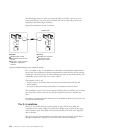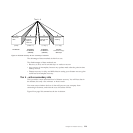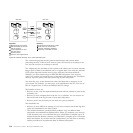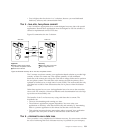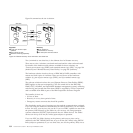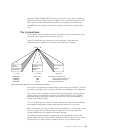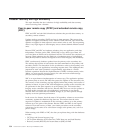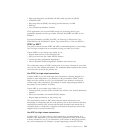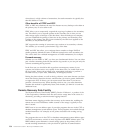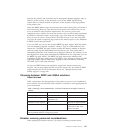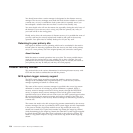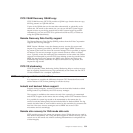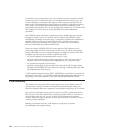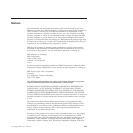where there is a high volume of transactions, but each transaction is typically less
than 200 dollars in value.
Other benefits of PPRC and XRC
PPRC or XRC may eliminate the need for disaster recovery backups to be taken at
the primary site, or to be taken at all.
PPRC allows you to temporarily suspend the copying of updates to the secondary
site. This allows you to suspend updates at the secondary site so that you can
make image copies or backups of the data there. After the backups are complete,
you can reestablish the pairing of data sets on the primary and secondary sites.
Updates to the primary that have been recorded by the 3990-6 are applied to the
secondary to resynchronize the pair.
XRC supports the running of concurrent copy sessions to its secondary volumes.
This enables you to create a point-in-time copy of the data.
PPRC and XRC also allow you to migrate data to another or larger DASD of
similar geometry, behind the same or different control units at the secondary site.
This can be done for workload management or DASD maintenance, for example.
Forward recovery
Whether you use PPRC or XRC, you have two fundamental choices. You can either
pair volumes containing both the data and the log records or you can pair only the
volumes containing the log records.
In the first case you should be able to perform an emergency restart of your
systems, and restore service very rapidly. In the latter case you would need to use
the log records, along with an image copy transmitted separately, to perform a
forward recovery of your data, followed by an emergency restart.
Pairing the data volumes, as well as the log volumes, costs more because you have
more data flowing between the sites, and therefore you need a greater bandwidth
to support the flow. In theory you can restart much faster than if you have to
perform a forward recovery. When deciding which to use, you must determine
whether this method is significantly faster, and whether you think it is worth the
additional costs.
Remote Recovery Data Facility
The Remote Recovery Data Facility (RRDF), Version 2 Release 1, a product of the
E-Net Corporation, minimizes data loss and service outage time in the event of a
disaster by providing a real-time remote logging function.
Real-time remote logging provides data currency at the remote site, enabling the
remote site to recover databases within seconds of the outage—typically in less
than 1 second.
RRDF runs in its own address space. It provides programs that run in the CICS or
database management system address space. These programs are invoked through
standard interfaces—for example, at exit points associated with writing out log
records.
The programs that run in the CICS or database management system address space
use MVS cross-memory services to move log data to the RRDF address space. The
RRDF address space maintains a virtual storage queue at the primary site for
records awaiting transmission, with provision for spill files if communication
236 CICS TS for z/OS 4.1: Recovery and Restart Guide



